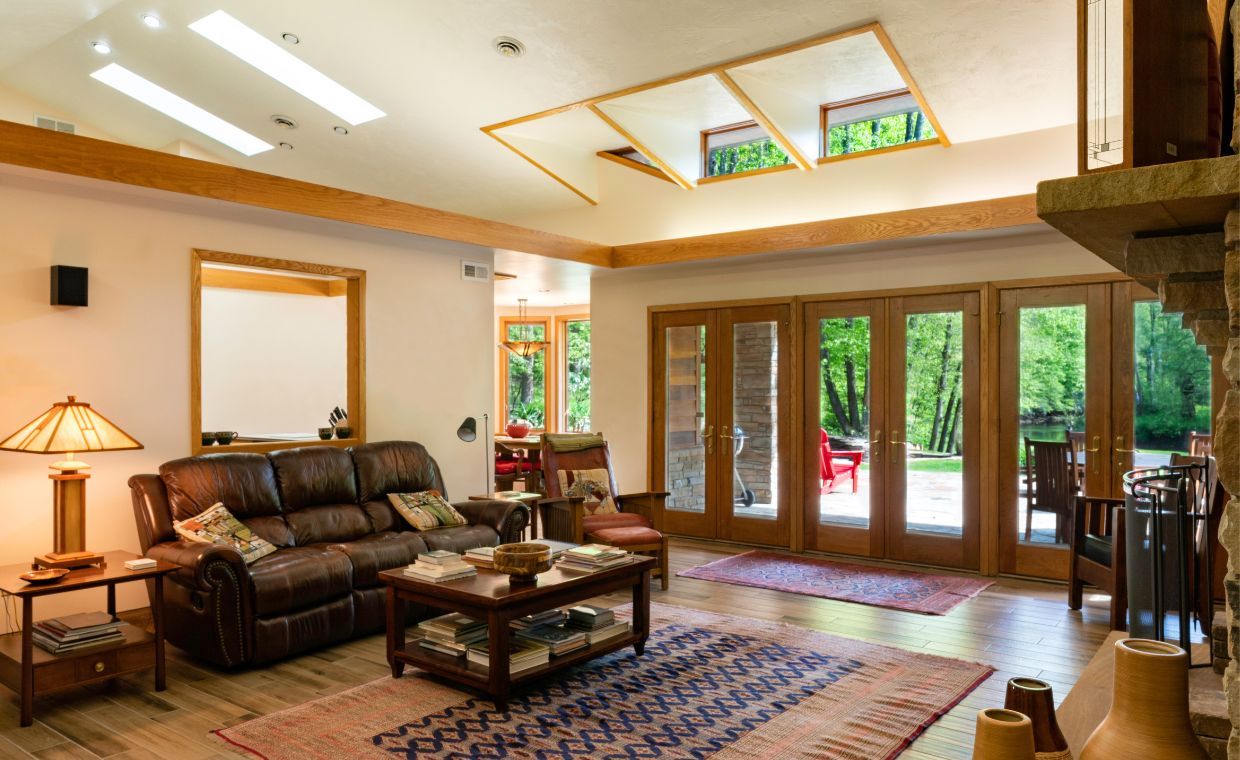
Table of Contents
Drawings of buildings and structures might seem like a mosaic of lines, symbols, and annotations to a layman. Still, for an architect, these drawings unfold like a narrative of spatial relationships and the structural integrity of light and shadow dancing across the facades. So, how about stepping into the shoes of an architect and exploring types of drawings for houses?
Let us begin with the basics, defining the plan and its types. Building drawings are the most significant deliverables produced by architects and building engineers. They provide precise instructions on how to carry out a building project to owners, general contractors, and subcontractors.
What is an Architectural Plan?

An architectural plan is a detailed drawing that shows the overall design and structural representation of a building. It serves as a comprehensive guide for construction, renovation, or modification, providing a visual and technical roadmap to bring a design concept to reality.
Every building drawing serves a specific purpose, from technical data serving, communicating ideas, and anticipating problems to project benchmarking and approvals. They help us visualise how each building will shape up during construction. They carry accurate and detailed building measurements, providing clarity regarding various sections.
You can expect to find the following in a house plan:
- The exterior view of the house
- House footings and other structural details
- Room layouts with all the walls, doors, windows, and furniture labelled
- Vertical wall plans, such as those for built-in cabinets, shelving, and other fixtures are in interior elevations.
- The outline of your roof
- Building insulation information, the flooring, and the roofing materials used are in the wall details.
However, these are of many types, ranging from architectural drawings, structural drawings, line drawings, development drawings, and many more. Let’s explore various types of drawings in depth.
What are The Various Types of Design Drawings?

Courtesy -Pinterest, hitechcaddservices
A construction project’s key design and construction details can be communicated using a variety of building design drawings, which include:
- Architectural drawing
- Structural drawing
- HVAC/Mechanical drawing
- Electrical drawing
- Plumbing drawing
- Fire protection drawing
1. Architectural Drawings

Architectural drawings are technical drawings that communicate the design and layout of a building. Architects, builders, engineers, and other construction professionals use it during the designing and various stages of a construction project. There are many types of architectural drawings:
- Site Plan Drawings
- Floor Plan Drawing
- Cross-section Drawing
- Elevation Drawing
- Roof Plan
- Landscape Drawing
- Working Drawing
i. Site Plan

A site plan is an architectural drawing used by architects, landscape architects, urban planners, and engineers that shows existing and proposed conditions for a given area. It exhibits the form, location, and orientation of a building on site. A site plan is a set of drawings that a builder or contractor uses to make improvements. It includes dimensions, vegetation, topography, and infrastructure. A site plan includes all the service connections for a building project, such as drainage, sewer lines, water supply, electrical, and lighting.
ii. Floor Plan Drawing

Courtesy - wikimedia
A floor plan is a two-dimensional drawing that outlines a building’s layout, including walls, doorways, entrances, structure, important fixtures, and furniture such as doors, windows, and staircases. You can sketch 2D-floor plans by hand or draw them on software.
iii. Cross-Section Drawing

Courtesy - thumbcadbull
A cross-section is a vertically cut section of a building that reveals the precise size and height of the building’s parts, like floor height, lintel height, and sill height. It mentions dimensions like floor height, lintel height, and sill height.
iv. Elevation Drawing

Courtesy - apiasmskype
An elevation depicts the exterior views of the house, illustrating the height, shape, and exterior finishes of each side of a building. It includes front, rear, and side elevations. Its primary function is to elaborate on the floor plan aspects. There are two types of elevation: exterior and interior. Exterior elevations represent the outside of the structure, i.e, the exterior of a house or building. The interior elevation represents everything from a space to a fully furnished space, down to the baseboards, windows, and crown moulding. Some elevations have 2D interiors.
v. Roof Plan

Courtesy - thumbcadbull
A roof plan is a graphical representation of a planned roof construction showing the layout of the roof, depicting ridges, valley slopes, and roof openings like skylights and chimneys.
vi. Landscape Drawing

Courtesy - olfcreekcompany
A landscape drawing features gardens, patios, paths, and drainage systems. The landscape drawing integrates house design with the surrounding environment. The lack of landscaping makes any home look unfinished. Ideally, a beautiful home or structure has a garden that blooms with vibrant greenery.
Many landscape architects have spent years mastering their skills to produce breathtaking designs. They can also assist with developing an apartment complex’s walkways and landscaping.
vii. Working Drawing

Courtesy - pinterest
Working drawings are a complete set of standardised drawings that specifies the design specifications of any residential project. It includes hatches, and tones to emphasise different materials. The purpose is to ensure proper execution of the project by providing a clear and accurate representation of the structure. Architects, structural engineers, contractors, and other professionals in the AEC industry use it.
2. Structural Drawing

Courtesy - pinterest
A structural drawing is an engineering drawing that includes a plan or a set of plans and details for how a building or structure will be built. Registered professional engineers prepare structural drawings based on the data provided by architectural drawings.
3. HVAC/Mechanical Drawing

Courtesy - hitechcaddservices
HVAC drawings are technical drawings that display information related to the cooling and heating of a space. The main objective of an HVAC system (Heating, Ventilation, and Air-Conditioning) is to maintain good indoor air quality by providing adequate ventilation with filtration and thermal comfort. It illustrates the location of air ducts, air conditioners, and furnaces, among other elements.
4. Electrical Drawing

Courtesy - hitechcaddservices
An electrical drawing is a type of technical drawing that shows information regarding power, lighting, locations of electrical outlets, fixtures, switches, and wiring. It guarantees the proper positioning of all the electrical systems in the house. To accurately communicate engineering design drawings to the personnel who will install the electrical system on the project, they are composed of lines, symbols, dimensions, and notations.
5. Plumbing Drawing

Courtesy - hitechcaddservices
The plumbing drawings detail the layout of plumbing fixtures, pipes, and fittings. It provides the details and location of sanitary pipes, sinks, toilets, showers, water heaters, water pipes, water drainage systems, and other plumbing systems required in a building. It ensures efficient plumbing systems.
6. Fire Protection Drawing

Courtesy - hitechcaddservices
A fire protection drawing includes all the important details about installation of the system for proper functioning and maximum efficiency. It provides an engaging way to educate children and adults about fire protection, safety practices, and emergency preparedness.
Each type of drawing plays a crucial role in communicating the design’s intent and construction details of a house. Architects, engineers, and designers make these drawings to ensure that the building meets both functional and aesthetic requirements.
Why is it Important?
Earlier, building plans were available in 2D, but now, due to the advent of technology, 3D building plans are available. These technological advancements facilitate a real-world walkthrough through the virtual environment without building a house. All these deliver great benefits to the clients and the designers, saving them time, cost, and labour. This section will help you understand the importance of a building plan.
- The building plan is useful for visualising your dream house.
- The building plan facilitates interaction between those concerned by serving as a channel of expression.
- The building plan is useful for having an idea of the big picture, the specifics, and the range of the project in terms of budget and duration.
- The amount of money required to finish a building project can be determined using the building plan.
- The ability to see oneself in a home is a major selling point, which is why floor plans are so useful in real estate.
- Before construction begins, showing clients a building plan is a great way to ensure everyone is on the same page. The ability to close sales quickly relies on your ability to communicate clearly and concisely with clients.
- The modifications and alterations are easier to implement.
- The building plan can aid in selecting building materials.
- The building plan guarantees well-planned usage of the given area.
- The building plan aids in the creation of 3D drawings.
Conclusion
The feasibility of a floor plan’s actual implementation depends entirely on the resources at hand. The amount of space allocated to the plan is also an important consideration. If you want to avoid crowding in your home, a decent floor design will make the most of your space. Architects and interior decorators can spend as little as two hours on floor plan software to design your home’s layout, decorate its inside and exterior, and create 3D renderings.
Also read: Types of Architectural Drawings Prepared by an Architect
Author Bio
Nafisa Nazneen Choudhury – Nafisa Nazneen Choudhury is a Civil Engineer (completed B.E. from Assam Engineering College) and is currently pursuing M.Tech in Structural Engineering at National Institute of Technology, Silchar. She is a Technical Content Writer, having over 3 years of experience and has wrote many articles related to Civil Engineering. She is also a Book Author (Authored – “Dream Tales of NNC: Revenge By Murder”) and her book can be found on Amazon. She is also a Guest Author at Gharpedia. Moreover, she is a certified member at Institution of Civil Engineers (ICE) and National Society of Professional Engineers (NSPE). She writes her blogs at her website – nnc2017.wordpress.com. She can be reached on LinkedIn.






























